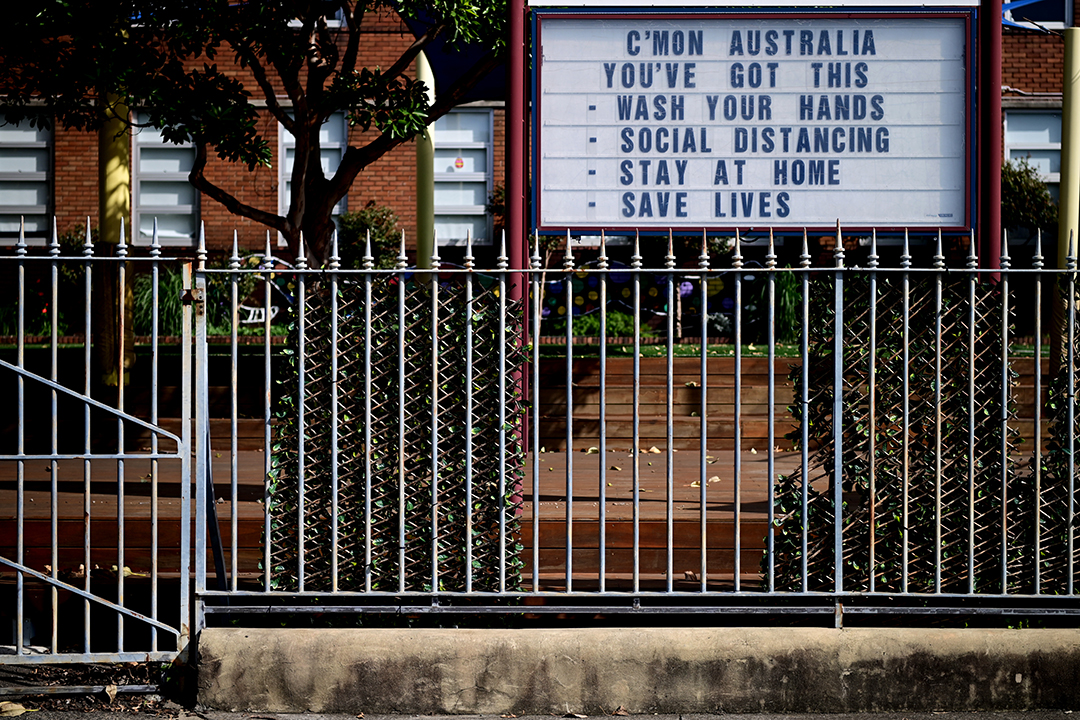

After living in lockdown mode for weeks, seeing Aussies look suspiciously at each other on the street (and some sickos thinking it’s OK to use a cough as a weapon against the police), we’ve all been forced to become COVID-19 or Coronavirus experts. I think most of us can now relate to that TV programme — “I’m a Celebrity. Get me out of here!”
And that’s the question more and more smart people are trying to answer, with local infection and death rates heading in the right direction. After living an abnormal life, we all want normalcy ASAP.
It comes as Spain, which has had a shocking experience with the Coronavirus, makes concessions for some workers, such as those in construction, to go back to work. Austria is opening small shops this week, and this is a country with a population of 9 million and over 220 deaths. Our population is 25 million and our deaths total around 60.
Regrettably, it’s going to be some time before we simply jump on a plane and fly to Italy, New York or Shanghai, or go to a rock concert or a footie game. But the road to normalcy might be closer than those who believed that we’d be in lockdown for six months!
What we’ve seen is a lot exaggeration of how bad this virus would be, based on guesswork that failed to take the unknown into account, such as government’s responses, the capabilities of health systems and so on. The deaths are an unforgettable tragedy of our lack of preparation, but our responses to the threat and the impact on flattening the so-called curve of infections and importantly, deaths, means we could be back to work sooner than you think.
Last week, there was laughter at the thought of the NRL playing footie by the end of May. While it still might be too soon a call, the officialdom of the code is working towards making it happen amidst choruses of doubters who have been scaring people for close to two months. Of course, many people needed to be frightened into better, smarter behaviour but it can play havoc with the truth and reality.
As cabin fever and lockdown lunacy start to infect people’s minds, it’s important to give Aussies hope that there’s light at the end of the tunnel that’s advancing towards us to give us a ride to relative freedom, to getting back to work and heading us towards normalcy.
At times like this, I look for smart people to give me a better understanding of what might happen rather than newsmakers who often focus on the news now rather than the potential news ahead. That’s why I introduced you to Coolabah Capital Investment’s Chris Joye a month ago. Via his research team, Chris was predicting that we’d see an infection peak by early April, while the Yanks would get there by late April. Those predictions look like they’ve been right on the money.
One guy who has had the form on the board when it comes to matters of national and business importance is Andrew Mohl, who, among many things, was once the CEO of AMP when it needed to be rescued from its bad period following a disastrous floating and a failure experience with its British investment into Henderson.
Writing in the AFR, he looked at the road to exiting this current, effective home detention!
He’s done an interesting calculation. “The loss of GDP or national income in this period will probably never be recovered,” he wrote. “In rough terms, a loss of 10 per cent of GDP over six months is $100 billion, or $550 million a day.”
Using the Wuhan example of a place that was crushed by COVID-19 and then copped an 11-week lockdown, which has now seen the wet markets, where the virus probably started, back open, he argues less affected areas like Australia might not need to be locked down for any time longer.
At the beginning, a ‘do nothing’ approach was tipped to see a national infection rate of 89% but after our lockdown, it’s 0.025%.
Clearly, lockdowns and social distancing work.
Mohl wisely calls for a blueprint drawn up by health experts on what kind of staged ‘get back towards normal’ might look like. And I reckon it should be done ASAP and then shared with the locked up population, so we can manage expectations.
I’m not worrying about crazy stats like the latest Roy Morgan consumer confidence index, which fell to nearly a 50-year low, and that’s because it is to be expected when you impose a virtual national closure of the economy. However, if numbers don’t improve in coming weeks and months, then I’d worry about a recession becoming a depression, as the economic collapse creates a social crash of optimism.
The country’s sacrificers locked up at home watching Coronavirus infection and death rates on the news and trawling Netflix and Stan by the hour, need to know that their sacrifice is paying off.
That’s the job of the PM and Treasurer going forward and it will determine if the Government’s and ScoMo’s new, higher rating can be sustained.
Economists have not been good quantifying how important confidence actually is to an economy, jobs and asset prices, but they know it is really important because when the ‘you know what’ hits the fan, like now, confidence crashes. History tells me that the Government needs to outline a possible course of action to get us back to normalcy ASAP. Confidence and the economy depend on it.